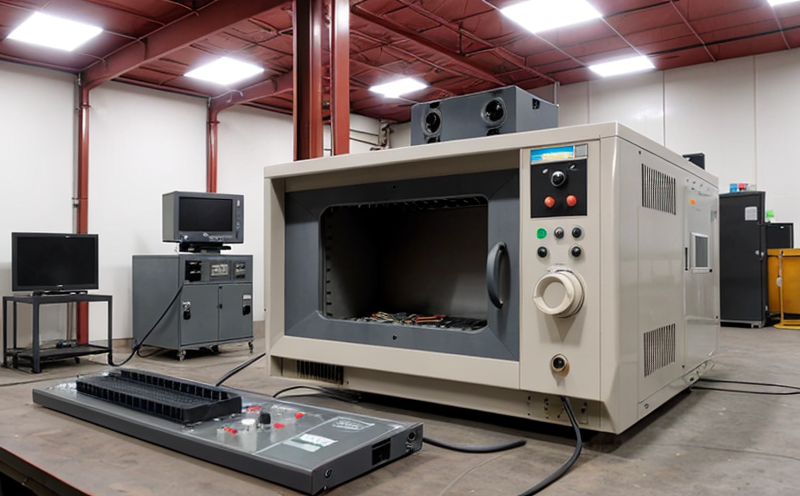IEC 61010 Safety Testing for Measurement and Control Equipment
The International Electrotechnical Commission (IEC) standard IEC 61010 provides a comprehensive framework for ensuring the safety of electrical measuring instruments, control devices, and associated equipment. This standard is essential in industries where precision measurement and reliable control are critical, such as manufacturing, power generation, and research facilities.
Compliance with this standard ensures that products not only meet strict safety requirements but also perform reliably under various environmental conditions. The tests cover a wide range of parameters including insulation resistance, protection against electric shock, and operational stability in different ambient conditions. For R&D engineers and quality managers, adhering to IEC 61010 is crucial for maintaining product integrity and ensuring regulatory compliance.
The testing process involves rigorous procedures that ensure the equipment can withstand harsh operating environments without compromising safety or performance. This includes high-voltage endurance tests, overcurrent protection verification, and electromagnetic compatibility checks. These tests are essential to prevent potential hazards in industrial settings where electrical devices operate at high power levels.
For procurement professionals, selecting suppliers who adhere to such standards is vital for ensuring the reliability of components used in critical systems. The standard's focus on safety and robust design makes it a cornerstone for any electronics manufacturer aiming to meet global market demands while maintaining a high level of product quality.
In summary, IEC 61010 ensures that measurement and control equipment is safe, reliable, and capable of operating under the most challenging conditions. This standard plays a pivotal role in protecting end-users from potential hazards and ensuring the smooth operation of complex industrial systems.
Test Parameters
The primary tests conducted under IEC 61010 include:
- Insulation resistance measurement
- Protection against electric shock verification
- Overcurrent protection testing
- Electromagnetic compatibility checks
- High-voltage endurance tests
Specimen Preparation
Before any testing can be performed, the specimens must meet certain criteria:
- The devices must have been manufactured according to specified design parameters.
- All components must be fully assembled and ready for testing.
- The environmental conditions under which tests are conducted should match expected operational environments as closely as possible.
Instrumentation Used
Advanced instrumentation is essential for accurate measurement and analysis during IEC 61010 compliance testing:
- High-voltage generators for insulation resistance checks.
- Multimeters for electrical parameter verification.
- Spectrum analyzers for electromagnetic compatibility assessment.
- Innovative software solutions to streamline data collection and analysis.
Reporting Requirements
The final report must detail all test parameters, results, and any discrepancies from standard specifications:
- A summary of each test performed.
- Detailed descriptions of any issues encountered during testing.
- An assessment of the equipment's compliance with IEC 61010 standards.
- Recommendations for improvements where necessary.
Industry Applications
IEC 61010 is widely used across various sectors:
| Sector | Applications |
|---|---|
| Manufacturing | Ensures safety in high-power machinery and automation systems. |
| Power Generation | Guarantees the safe operation of power plants and substations. |
| Research Facilities | Aids in developing new technologies while ensuring worker safety.
Frequently Asked Questions
Industry Applications
IEC 61010 has a broad range of applications across various industries. In the manufacturing sector, it ensures that high-power machinery and automation systems operate safely and reliably. For power generation plants, compliance with this standard guarantees safe operation in potentially hazardous environments.
- Manufacturing: Ensures safety in complex industrial settings.
- Power Generation: Guarantees reliable performance in critical facilities.
- Research Facilities: Supports the development of new technologies while ensuring worker safety.
Sustainability Contributions
The adherence to IEC 61010 not only enhances safety but also contributes positively to environmental sustainability:
- Avoids potential accidents that could lead to waste or damage.
- Ensures longer operational lifespans, reducing the need for premature disposal of equipment.
Customer Impact and Satisfaction
The implementation of IEC 61010 standards leads to significant improvements in customer satisfaction:
- Increased trust in the reliability and safety of products.
- Enhanced reputation among clients due to adherence to international best practices.
- Better alignment with regulatory requirements, reducing the risk of non-compliance penalties.
Quality Assurance
By adhering to IEC 61010, manufacturers can ensure that their products are safe and reliable. This leads to higher customer satisfaction and better market reputation:
- Consistent quality across all production batches.
- Reduced risk of product recalls due to design flaws or safety issues.
Environmental and Sustainability Contributions
The adherence to IEC 61010 has a positive impact on the environment:
- Avoids potential accidents that could lead to waste or damage.
- Ensures longer operational lifespans, reducing the need for premature disposal of equipment.
Sustainable Manufacturing Practices
IEC 61010 promotes sustainable manufacturing practices:
- Reduces the environmental impact by minimizing product waste.
- Encourages the use of durable and reliable components, leading to lower maintenance costs and longer operational lifespans.





